On February 13th, the Ministry of Industry and Information Technology website announced the 16th batch of free vehicle purchase tax for new energy vehicles. This was also the first catalog release in 18 years. The time for the Ministry of Development was significantly advanced, which reflected the increasing normalization of financial support policies for new energy vehicles.
This approval standard is still based on the "Announcement of the Department of Industry and Information Technology of the Ministry of Finance of the State Administration of Taxation on the Exemption of Purchase Taxes for New Energy Vehicles" (Announcement No. 53 of 2014). The sub-category and subsidy for new energy vehicles should have no affiliation, and it should be supported by the subsidy policy. This is an important encouragement policy for the country to promote the transformation of China's transport energy strategy, advance the construction of ecological civilization, and support the development of the new energy automotive industry. Considering that the subsidies for the 18-year transitional period are still implemented in 17 years, this batch of catalogs is a forward-looking list, which is conducive to the incremental growth of new energy vehicles in the second half of the year.
I think that we should encourage early sales of new energy vehicles in 18 years, especially long-haul passenger vehicles, and should give relatively high new subsidies for 18 years as early as possible during the transition period.
1, release tracking
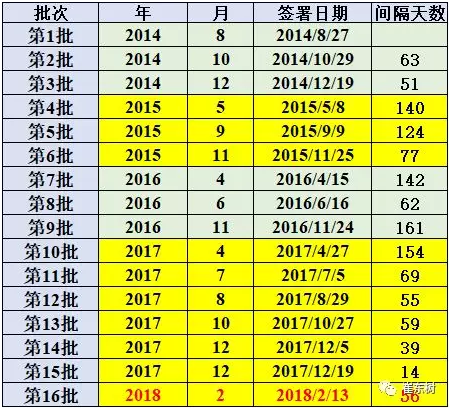
On February 13, the Ministry of Industry and Information Technology website announced the 16th batch of new energy vehicle-free vehicle purchase tax, which was signed on February 13th. According to the last December 19th, the directory was issued 56 days.
17 batches of new-energy vehicle exemption-free tax catalogs were issued in 6 batches. All over the years, there were 3 batches of catalogs, and the 17-year catalog release was very consistent with the law, and there was no change in policy direction.
The 18-year catalog was released on February 13 and was published earlier than the mid-April of the calendar year. Therefore, this round of catalogs is of great significance to the sales in March. This is very helpful for the promotion of brand sales on new energy vehicles. Big.
2, the overall situation of this batch
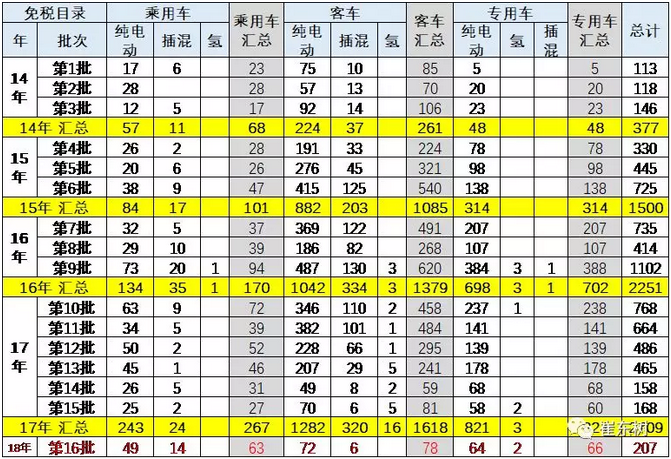
In 2018, the 16th batch of new energy vehicle tax-free catalogues had a total of 207 models, while the 10th batch of tax exempt catalogs, that is, the first batch of 17-year catalogs had 768 models. The first batch of this year's relative 17 years fell substantially. However, from the structural point of view, there are 72 passenger cars in the 10th issue, 16th in the 16th batch of 18 years, 63 passenger cars, and the 17th batch of the 10th batch is a 17-year passenger car. With the most catalogs, the list of new energy passenger cars for 18 years should be said to have an overall high number. The 18-year list of new energy vehicles is relatively small, of which passenger cars and special vehicles have decreased, and in particular, the tax-free list of new energy vehicles for passenger cars has dropped from 458 in the 10th batch of 16th to 78 in the 10th batch in 16th, which has dropped by 380; The car's new energy vehicle tax-free list also fell from 238 models to 66 models.
3, enter the tax-free directory models more full

Most of the current subsidy list models have entered the tax exemption list, and most of the 1-15 batch subsidy catalogues have entered the tax exemption list, forming a good interactive effect. In the 16th batch of tax exemption catalogues, there are 91 first-phase subsidies in 18 years, which is also favorable for the promotion of new energy sales.
4, new energy vehicles cruising mileage

The mileage of new energy vehicles continues to grow in general, and electric vehicles are particularly noticeable. The overall average of the 14th batch of pure electric passenger vehicles is 248 kilometers, and 15 batches are 258 kilometers. The 18th batch of 16th batches is 256 kilometers, with an average of 250 kilometers. It is much higher than the average cruising range of 190 kilometers of pure electric passenger cars in 2016 and only has an average mileage of 147 kilometers. The cruising range of pure electric vehicles for passenger cars is significantly increasing.
The cruising range of pure electric buses is also greatly increased. In the 18th batch, the cruising range of the 16th batch reached 326 km. The average cruising mileage in 217 years is also about 295 meters, which is 281 kilometers, and 15 years is 249 kilometers. In 14 years, it is 223 kilometers, and every year it is increasing with a cruising range of 23 kilometers.
The cruising range of military vehicles is also relatively fast, with an average of 224 kilometers in 16 years, an average of 250 kilometers in 17 years and 280 kilometers in 18 years.
However, the cruising range of plug-in hybrids is relatively slow. In 2018, the pure electric range of plugged-in hybrid passenger vehicles reached 64 kilometers, 73 kilometers in 216 years, 61 kilometers in 15 years, and about 60 kilometers in 17 years. , so the cruising range of plug-in hybrid passenger cars is relatively slow,
The cruising range of plug-in hybrid passenger trains is relatively stable in recent years. It reached 66 kilometers in 14 years, 53 kilometers in 2015, and it is about 70 kilometers in 17 years. By 18 years, it is still 70 kilometers in life. Level.
5. Battery consumption of new energy vehicles
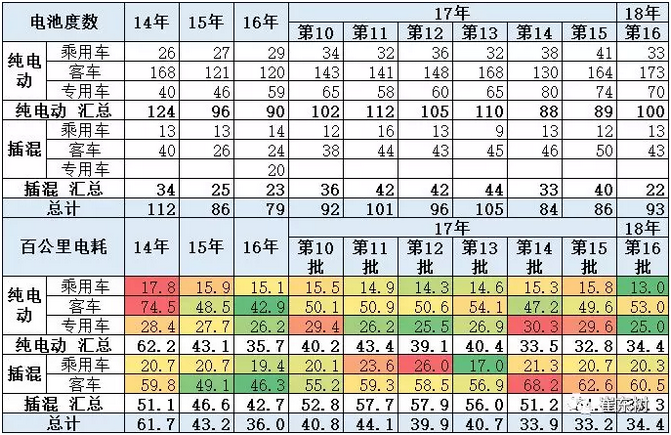
The average battery charge of the 16th batch of new energy vehicles reached 93 degrees, which is relatively high compared with 79 degrees in 16 years. 93 degrees in 2018 is also stronger than the 86 degrees in the 15th batch of 17 years. The charge of a purely electric passenger car is 33 degrees, which is not very high for 17 years. However, its electricity consumption per hundred kilometers has dropped to a level of 13 degrees, which is much better than the previous average of 15 degrees or more.
In 18-year pure electric buses, the average power consumption is 173 degrees, which is relatively high compared with the 120-degree levels in 17 and 16 years. The kilometer power consumption is still at a level of about 50 degrees, and the electric vehicle is loaded. The amount of 70 degrees is also slightly higher than the 17-year level.
Due to the current increase in battery energy density and assessment of cruising range, passenger cars are mainly considered. Therefore, the 100 kilometer power consumption index of the 16th batch of passenger cars in 18 years is particularly noticeable.
6, the battery's energy density

The average battery weight you put on a bicycle is 706 kg, which is also significantly lower than the 879 kg in 16 years. Among them, the battery weight of the 18 pure electric cars is 259 kg, which is larger than the 335 kg of the 15th batch. This is mainly due to the relatively low passenger capacity of the 218 years, um, and the energy density of the battery is increased from The magical one hundred and one hundred rises to 128 in the 16th batch and 126 in the 14th batch and 126 in the 15th batch, with a slight increase.
In the 18-year pure electric passenger car battery, the energy density increased, and the relatively high energy density level of 138 watts per kilogram was relatively clearly achieved. This also reflects the increase in energy density of the lithium iron phosphate battery and still has great potential.
Although the advantage of using ternary batteries for passenger cars is obvious, the higher level of energy density embodied in pure electric buses is also worthy of attention.
7. Upsizing of new energy vehicles

In 2008, the new energy passenger car vehicles did not achieve new breakthroughs in large-scale production. In the 16th batch of news, the average mass of pure electric passenger cars was 12,11 kg, and the average annual average of 16 years was 1,260?, and the 17-year average was 1400 kg.
8, the current electric passenger car
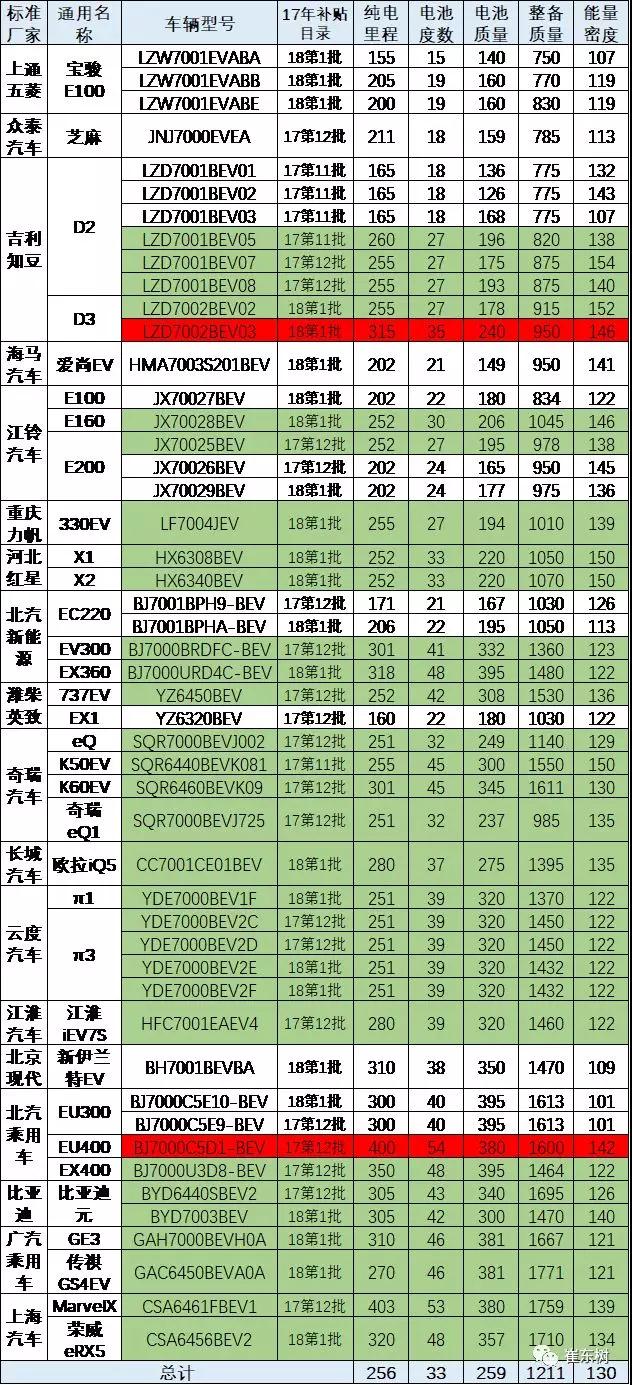
There are many new models introduced in the tax exemption list for this application, and it is also faster for independent products to improve. The Changan Automobile, Geely Zhidou Automobile, Chery New Energy, and Beijing Automotive New Energy have entered the catalogue. Dongfeng Motor, BAIC New Energy, and Chery have high energy density.
. In the first batch of new energy passenger vehicles in 2018, the main goal was to push the flat panel in the first half of the year, so the sesame seeds like the Baojun E100 and Zhongtai Automobile were the mainstream of 17-year subsidies with an energy density of around 100. The energy consumption density of pure electric vehicles introduced by Chery Automobile, Geely Zhidou, and Beijing Auto New Energy are all at a good level above 120, and the cruising range is also above 250 kilometers. The higher cruising range is conducive to obtaining Higher subsidies in 2018.
For example, the mileage of the D3 of Geely Known Bean has reached 315 kilometers, with an energy density of 146. The 400 model of the 270, with a cruising range of 400 kilometers and an energy density of 142, should be said to be the most advantageous model in the 18-year subsidy.
9, the current passenger car mixed
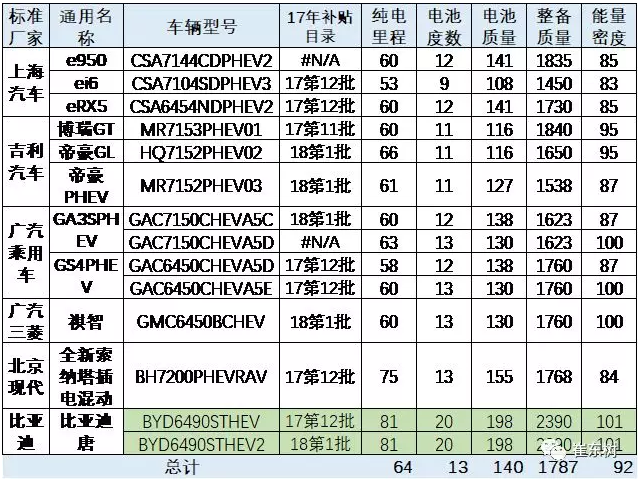
The performance of the plug-in hybrid vehicle model introduced in the 16th batch of new energy vehicle exemption-free tax catalog in 18 years was relatively normal, especially for the product with 80 km of pure electric power. It requires a higher consumption index than the traditional passenger car index. 60% of the time, so it is relatively easy to reach the standard, while the plug-in hybrid passenger car with 80+ kilometers of new energy requires the same electricity as the pure electric vehicle, so in this case, like BYD Tang, etc. The models are also relatively advantageous, because their pure electric mileage is 80 kilometers, and their power consumption is at 20 degrees, so it should be said that the overall level of 22 degrees, there is a certain degree of difficulty.
Considering plug-in hybrids, passenger vehicles enjoy a 0.7-fold subsidy for 17 years in the overdue period of subsidy implementation in 18 years, so the subsidy intensity is relatively small. Therefore, car companies will generally respond to traditional models, and may not be effectively introduced into the market with the latest models that meet the 18-year standard, so they may be 17-year old cars during the transition period from February to June. Sales are not conducive to the growth of the auto market.
The early sales of new energy new cars should be encouraged for 18 years. In particular, long-life passenger cars should be given relatively high new subsidies for 18 years as early as possible during the transitional period.
Z50 Series Solenoid Valve,Solenoid Control Valve,Hydraulic Solenoid Control Valve,Solenoid Control Valves
Huaian Hy-waloil Machinery Co.,Ltd , https://www.hywaloil.com